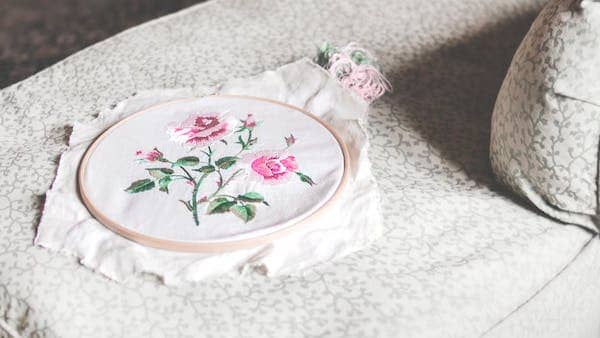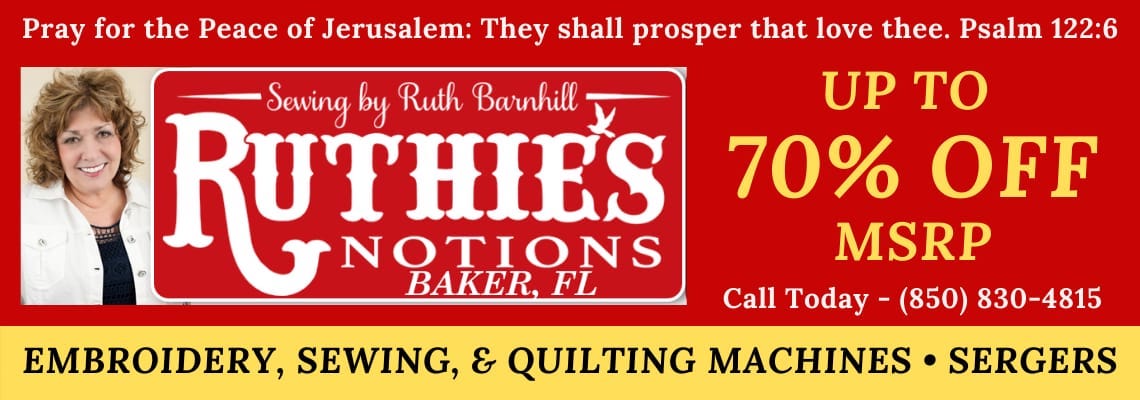 If there is a silver lining from the past year, it’s that time at home that allowed us to pursue creative projects. Some people took up baking bread; others home improvement. However, one of the most popular new-old-pastimes that saw a resurgence was sewing!
If there is a silver lining from the past year, it’s that time at home that allowed us to pursue creative projects. Some people took up baking bread; others home improvement. However, one of the most popular new-old-pastimes that saw a resurgence was sewing!
If you, too, are on the sewing bandwagon, welcome! There is a lot to learn, and I love to teach.
This article will serve as a guide to cross stitch vs. embroidery. Navigating the two can sometimes be confusing. But we’ll make it easy to understand.
Read on to learn the basics of cross stitch vs. embroidery. Understanding them can help you decide which project you want to undertake next.
What is Embroidery?
Embroidery is an art form, almost like paint but with thread! You begin with a pattern. The pattern can be simple or complex.
Then, you fill it in. Different colors of floss, different stitch patterns, and different surface embroidery techniques make your piece unique.
There are two ways to embroider something; by hand and by machine. The look you want your project to have will inform the method you use.
Using a machine will give you a more polished look. In contrast, hand embroidery projects offer unique pieces. Let’s take a quick look at both options.
Machine Embroidery
Most of what you’ve seen embroidered (think luggage, baseball hats, jackets, etc.) is by machine.
But machine embroidery is not just for commercial use. Many sewing enthusiasts find that having a home embroidery machine is an asset.
You can complete many intricate designs with laser-like precision. Not to mention you will achieve this feat with lightning speed compared to hand embroidery.
Some materials withstand embroidery machines better than others. Consider one of the following for your sewing project if using a sewing machine:
- quilting cotton
- wool
- denim
- polyester
Hand Embroidery
Hand embroidery is one of the most beloved crafts around the world. Each stitch will be unique, and every piece you hand embroider will be slightly different. But that’s all part of the charm of hand embroidery.
Hand embroidery is helpful to know if:
- you can’t obtain an embroidery machine
- you want to work with delicate fabrics.
Fabrics like felt, silk, lace, 100% cotton would all work well for hand embroidery.
Hand embroidery is very basic and easy to learn. It’s the easiest way to add a wide range of designs, and you can do it anywhere.
What is Cross Stitch?
Cross stitch is actually a form of hand embroidery. The cross stitch uses threading shaped in an x to create a tiled-like pattern. No other stitch will get you the same result.
Using the x-shaped stitch pattern, you get a boxy look to the finished product. You get lots of geometric edges, stair-stepping and diagonal stitch leading lines, which is the appeal behind the cross stitch.
Cross stitch is an excellent style of embroidery for beginners. Why? It’s simple, requiring one kind of stitch method, and has a fixed pattern. And the patterns can be simple or complex as you gain more confidence in your skills.
Cross Stitch vs. Embroidery
When it comes down to cross stitch vs. embroidery, the difference is simple.
Embroidery is simply the umbrella term for the art of designing thread on fabrics as a whole. In contrast, cross-stitch is a type of embroidery—kind of like the entry-level sewing stitch.
Try them both and see what you can create!
Still, looking for more sewing insights? Please check out our blog. I’ve got tons of useful articles about all things sewing project related.
